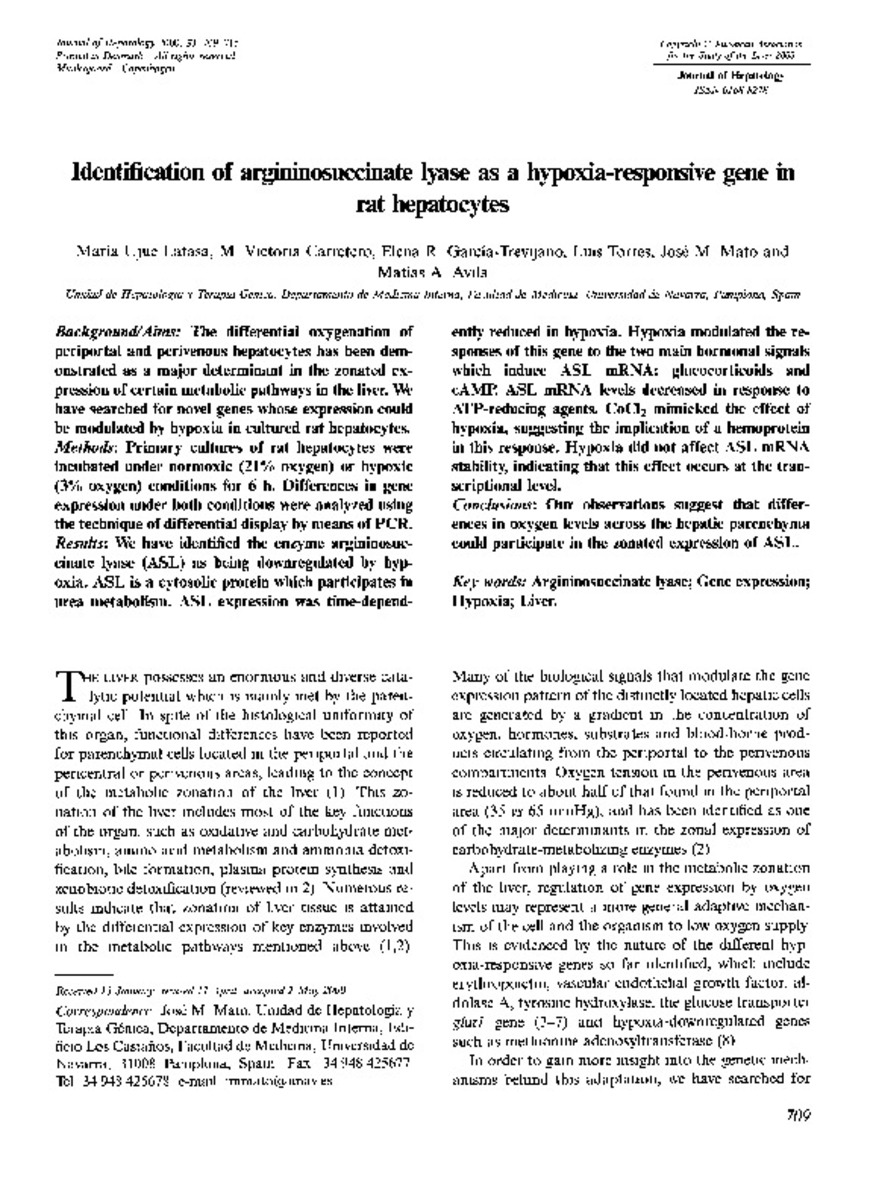Identification of argininosuccinate lyase as a hypoxia-responsive gene in rat hepatocytes
Palabras clave :
Argininosuccinate lyase
Gene expression
Hypoxia
Liver
Fecha de publicación :
2000
Cita:
Latasa MU, Carretero MV, Garcia-Trevijano ER, Torres L, Mato JM, Avila MA. Identification of argininosuccinate lyase as a hypoxia-responsive gene in rat hepatocytes. J Hepatol 2000 Nov;33(5):709-715.
Aparece en las colecciones:
Estadísticas e impacto
0 citas en

0 citas en

Los ítems de Dadun están protegidos por copyright, con todos los derechos reservados, a menos que se indique lo contrario.







